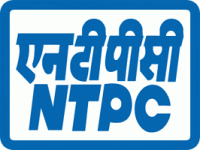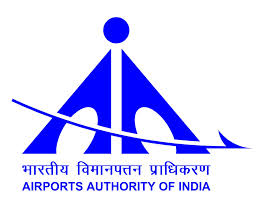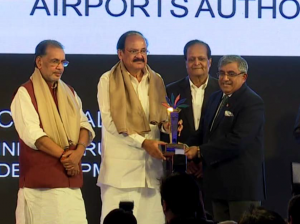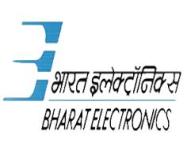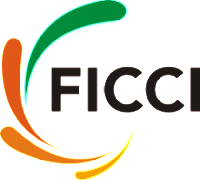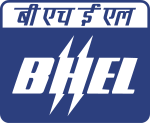Bharat Heavy Electricals Limited (BHEL) has recorded the highest-ever Commissioning of Projects in its history and the highest Order Booking in the last Five Years in fiscal 2015-16, ending the year with significant traction in growth drivers. Enhanced focus on project execution has resulted in BHEL creating history by way of commissioning/synchronizing an all-time high 15,059 MW of power generating equipment during the year. With this, the worldwide installed base of power generating equipment supplied by BHEL has exceeded 170 GW. This includes the highest-ever power generation capacity addition of 13,061 MW to the Indian utility segment, a quantum jump of 59% over the previous year. Notably, the capacity addition of domestic utility sets is 23% higher than the target set by the government for BHEL. With this, BHEL has already achieved 94% of the capacity addition target for the XII Plan in first 4 years itself. Despite intense competitive pressure in the power and capital goods markets during the year, BHELachieved the highest order booking in the last five years, at Rs.43,727 Crore, a 42% leap over 2014-15.
This comprises orders worth Rs.38,529 Crore in the Power segment and Rs.5,125 Crore in the Industry segment. The company ended the year with a total order book of over Rs.1,10,000 Crore. Focus on increased localization of supercritical technology, higher technology depth, and design optimization enabled the company to enhance its competitiveness and strengthen its leadership in the power plant & associated equipment segment of the Indian utility market. While operating in a difficult business environment, the company enhanced its market share to a significant 74%, thereby retaining its market leadership position during 2015-16. Significant orders in the Power segment include 5×800 MW Yadadri TPS (Engineering Procurement Construction (EPC)) from TSGENCO, Telangana; 2×800 MW Uppur (Boiler Turbine Generator (BTG) package) from TANGEDCO, Tamil Nadu; 2×800 MW Telangana STPP (Steam Generator package) Ramagundam from NTPC; 1×800 MW North Chennai Extn. (BTG) from TANGEDCO; 1×800 MW Vijayawada (BTG package) from APGENCO, Andhra Pradesh; 1×800 MW Krishnapatnam (BTG package) from APPDCL, Andhra Pradesh and 1×525 MW Tuticorin (BTG package) from SPIC Electric Power Corp. Pvt. Ltd. Notable orders in the Industry segment include three orders for 765 kV Substations from Powergrid for the first National Green Energy Corridor Project and the first commercial order for 400 kV GIS bay for 3×180 MW Chamera-1 HEP from NHPC, among others. In 2015-16, BHEL has firmly established itself as a leading supplier of eco-friendly supercritical sets in the country. During the year, 55% of the supercritical sets commissioned in the country, aggregating to 4,140 MW were contributed by BHEL. This includes the commissioning of its first highest-rating 800 MW set at Yeramarus, 700 MW set at Bellary, two 660 MW sets at Lalitpur and one each at Bara and Mouda.
Another notable achievement of the year was commissioning of 810 MW of hydro projects, the highest in the last 11 years. In the export market, marking a major milestone in the ‘Make in India’ initiative, Sudan’s largest thermal power plant, Kosti TPS (4×125 MW), was commissioned by BHEL on EPC basis. The power plant was inaugurated by the President of Sudan, H.E. Omer Hassan Ahmed El-Basheer. In 2015-16, BHEL also forayed into new markets with maiden orders from Belgium and Mozambique, expanding its global footprint to 78 countries. With its innovation-led growth strategy, the company continues to rank among the highest R&D spenders in the country in the engineering and manufacturing segment with an R&D expenditure at 3.34% of its turnover.
The R&D efforts of the company are aimed at improving the efficiency of existing products and developing new products, relevant to the needs of the country both in terms of technology & features vis-à-vis global benchmarks. During the year, BHEL filed the highest-ever 477 patents and copyrights in a year, enhancing the company’s intellectual capital to 3,441. Leveraging its experience of three decades in the Solar PV (SPV) business vertical, the company is capitalising on emerging opportunities in the segment. During the year, BHEL set a new record in its Solar PV business in a single year, by commissioning 40 MWp of SPV power plants. These include SPV plants for KPCL, NLC, GEDCOL, Electricity Board of Daman & Diu, and ONGC. In addition, turnkey orders for two Grid Interactive Solar PV Power Plants of 50 MW each from NTPC and first ever Solar Canal top project (1 MWp) from NREDCAP were received during the year. During 2015-16, BHEL recorded a Turnover of Rs.26,702 Crore (Provisional). With a Net Profit of Rs.396 Crore during Q4FY16, the company made a Net Profit (loss) of Rs.(877 Crore) during the year. The performance during the year has been impacted mainly due to continued subdued business environment, resulting in reduced level of operations and non-lifting of hold in most of the stranded projects. The company’s continued focus on cash realization during the year has resulted in a cash surplus situation.
The rising trend of debtors has also been arrested. Continuing its tradition of bagging prestigious national/international awards, BHEL and its employees won several awards during the year such as 7 Prime Minister’s Shram Awards, 10 Vishwakarma Rashtriya Puraskars, 5 National Safety Awards, EEPC’s Star Performer Award for the 25th year in succession, CBIP Award for Best Power Equipment Manufacturing Organisation, India Pride Award for Excellence in Heavy Industries, Greentech Environment Award in the Engineering Sector and, CII Championship Award. As a committed Corporate Citizen, BHELcontinued to undertake various socio-economic and community development programmes during the year. Major CSR projects undertaken during the year included 276 Bio-digester Toilets on the banks of the Ganges near Haridwar and Rishikesh; automated system for solid waste management in 14 wards of Varanasi under ‘Swachh Bharat’ and ‘National Mission for Clean Ganga’ initiatives.
Also, 16,500 individuals were trained at BHEL as part of the skill development initiative of the Government of India. BHEL considers ‘Make in India’ as an inflexion point to significantly scale up and diversify its business mix. New opportunities are emerging in defence, railways, solar and also in the conventional power sector – most importantly with a focus on enhancing technology depth. The company is building new capabilities and exploring new business models to take advantage of emerging big-ticket opportunities and is confident of regaining the growth momentum in the near future.




